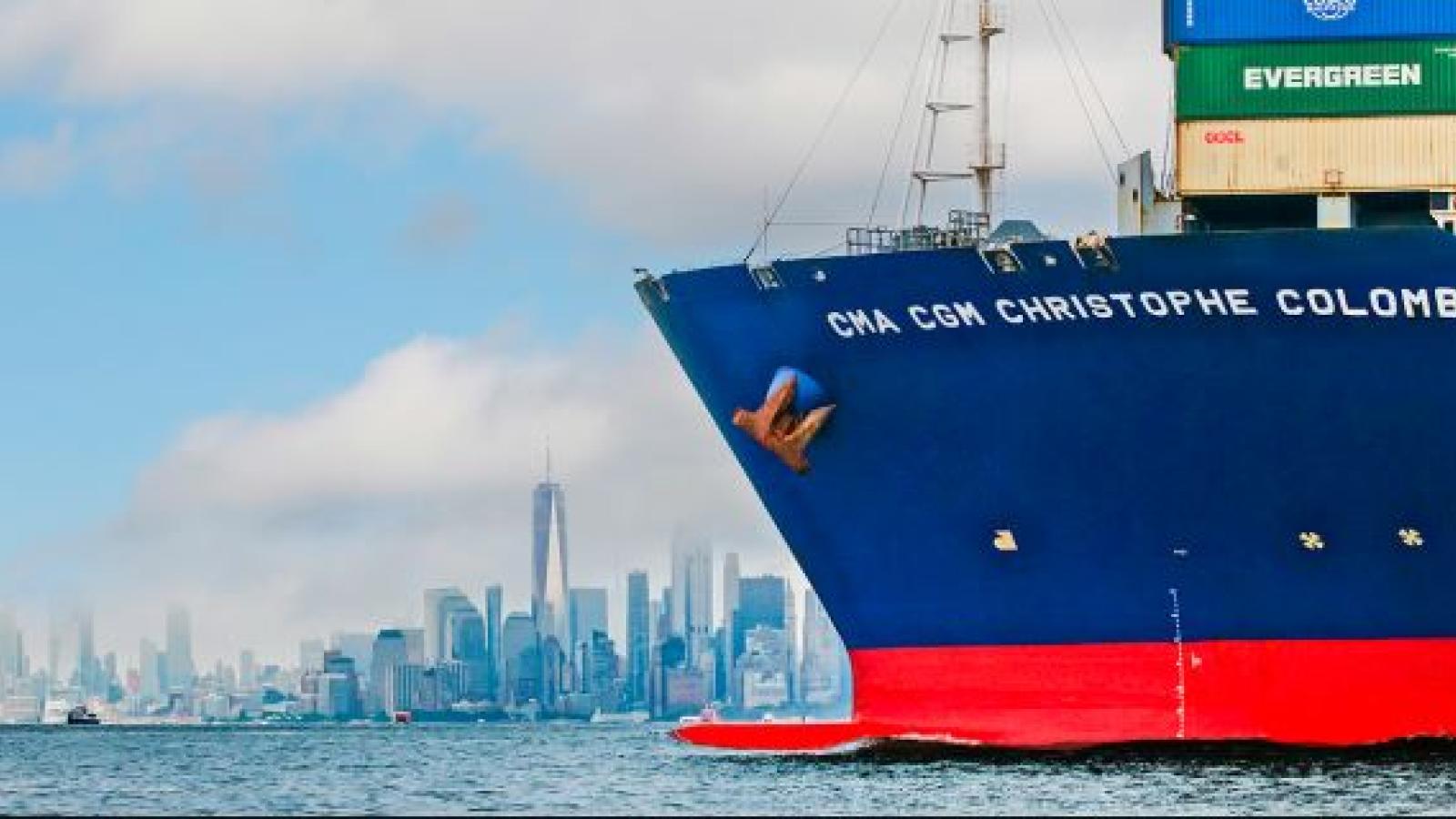
CMA CGM has expanded its portfolio of terminals in the US to seven. Photo credit: CMA CGM.
CMA CGM completed its acquisition of two container terminals at the Port of New York and New Jersey this week, strengthening the carrier’s footprint on the US East Coast which continues to capture a growing share of Asia-US business from West Coast ports.
The terminals — Bayonne in New Jersey and Howland Hook in New York sold by Canada’s Global Container Terminals — expand CMA CGM’s portfolio of US terminals to seven.
“These two new assets provide the group with flagship terminal operations at a critical entry point on the US East coast,” CMA CGM said in a statement Friday.
The acquisition of the two marine terminals includes terms that require the French carrier to bear more of the maintenance costs and share demurrage revenue with the Port Authority of New York and New Jersey.
CMA CGM’s East Coast deal follows its acquisition of the Fenix Marine Services container terminal in Los Angeles in late 2021.
West Coast market share eroding
The two East Coast terminals are coming under CMA CGM’s control as fresh data reveals how the West Coast’s share of imports from Asia eroded during the 13 months of contentious contract negotiations between the International Longshore and Warehouse Union (ILWU) and waterfront employers. A new six-year coastwide contract was finally ratified this week.
The share of Asian imports landing on the West Coast in July fell to 53.1%, down from 59.3% in June and the lowest since last November, according to data from PIERS, a sister company of the Journal of Commerce within S&P Global. The share was 60.4% when longshore contract talks began in May 2022.
US imports from Asia increased for the fifth consecutive month in July to 1.46 million TEUs — the highest since last September, while the East Coast increased its share of that volume to 37.7% from 32.9% in June.

CMA CGM made no direct reference to the rising market share of Asian imports handled by its new East Coast terminals, but noted that “development plans at both terminals will provide needed capacity to support the fluidity of US supply chains.” The carrier pledged to invest in infrastructure to support continued growth at the terminals and has set itself an ambitious target of increasing capacity at the facilities by 50% in 10 years.
For the rest of this year, the gloom appears to be lifting as demand predictions indicate a return to year-over-year growth in the fourth quarter.
In its August Global Port Tracker (GPT), the National Retail Federation (NRF) forecasted that all US imports in October will be down only 1% from October 2022. The tracker also forecast that November imports will be up 8% over November 2022, with December imports 10.7% higher than the same month a year earlier.

